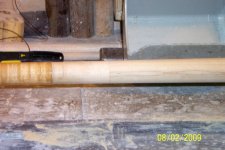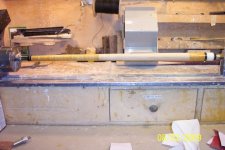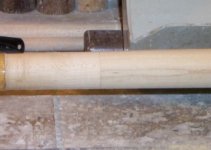I know with all the experienced individuals who are members of this forum I hope some one has seen this method of joining a handle / butt. It doesn't make a great deal of sense to me personally, except that the cue was being made from a solid piece maple that didn't meet the expectations of the cue maker so it was cut and re-joined. This cue is another one of those unknown cues that no was able to identify. Any idea's or information would be great.



Thanks Craig



Thanks Craig
Last edited: